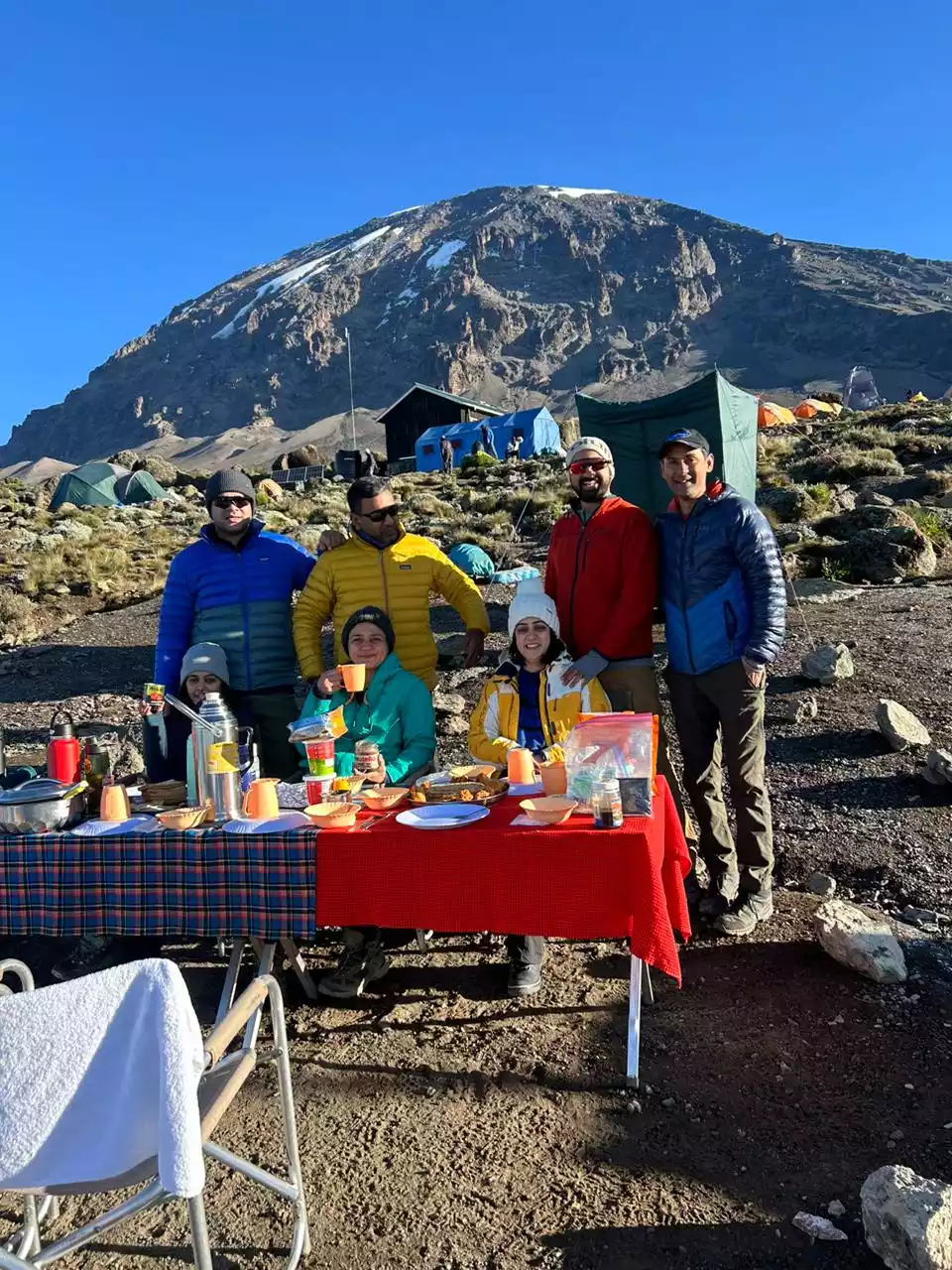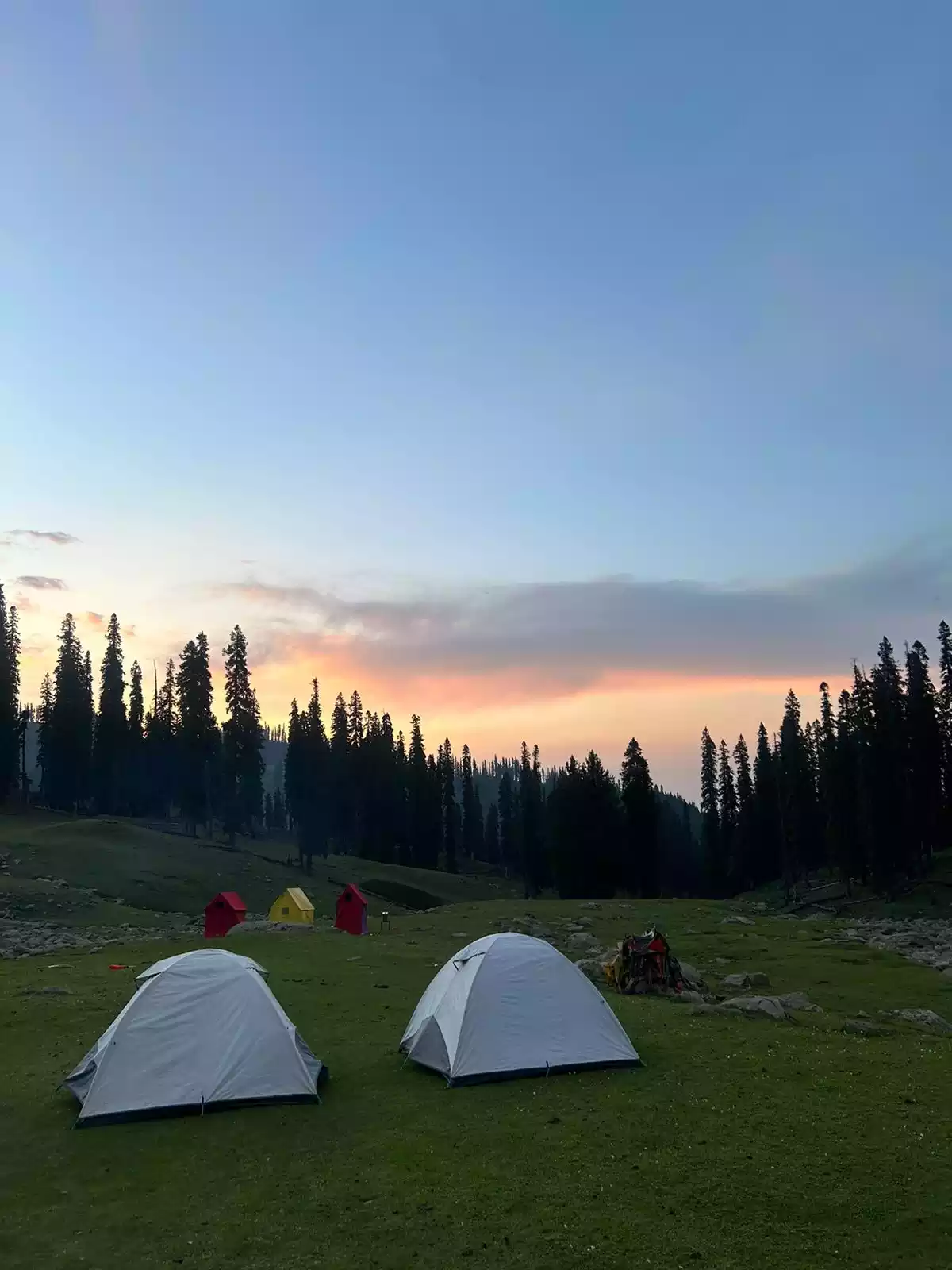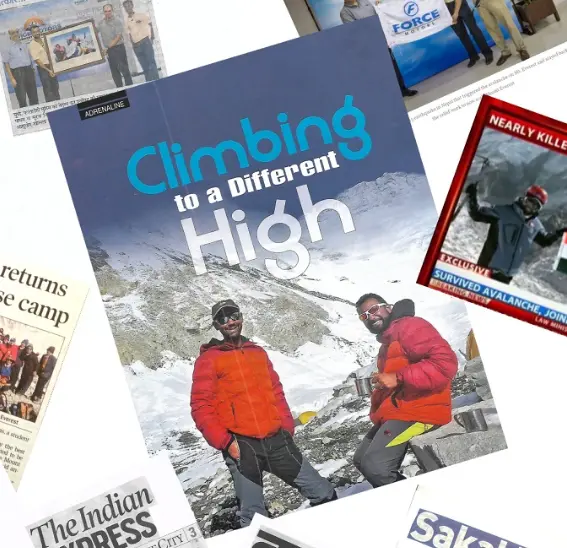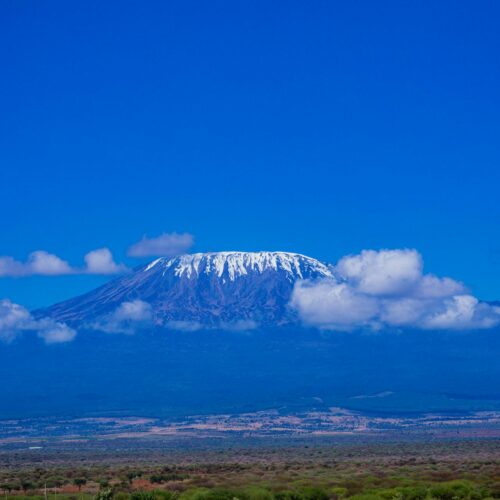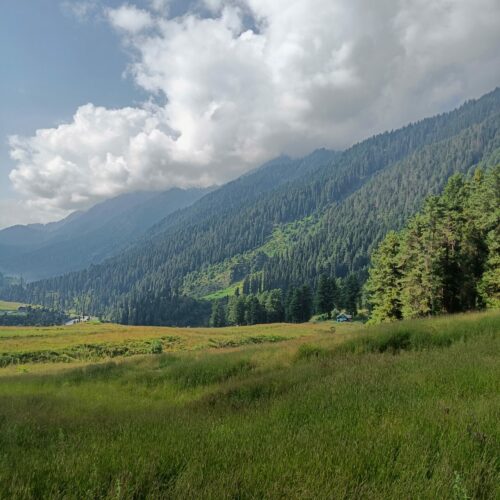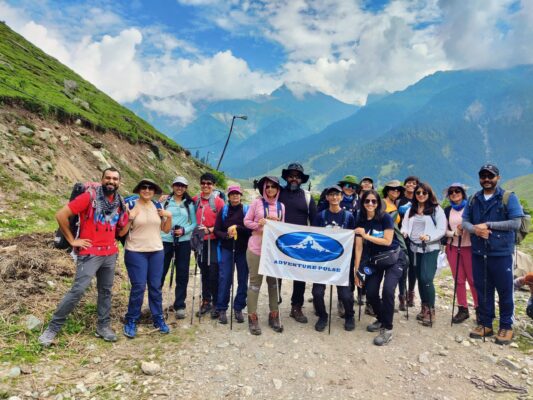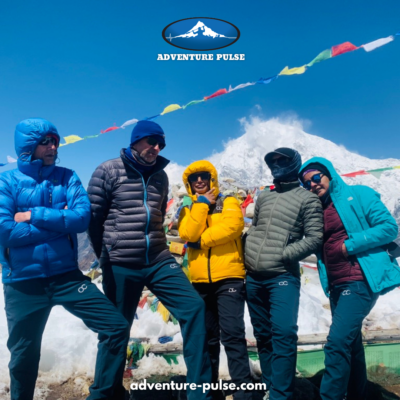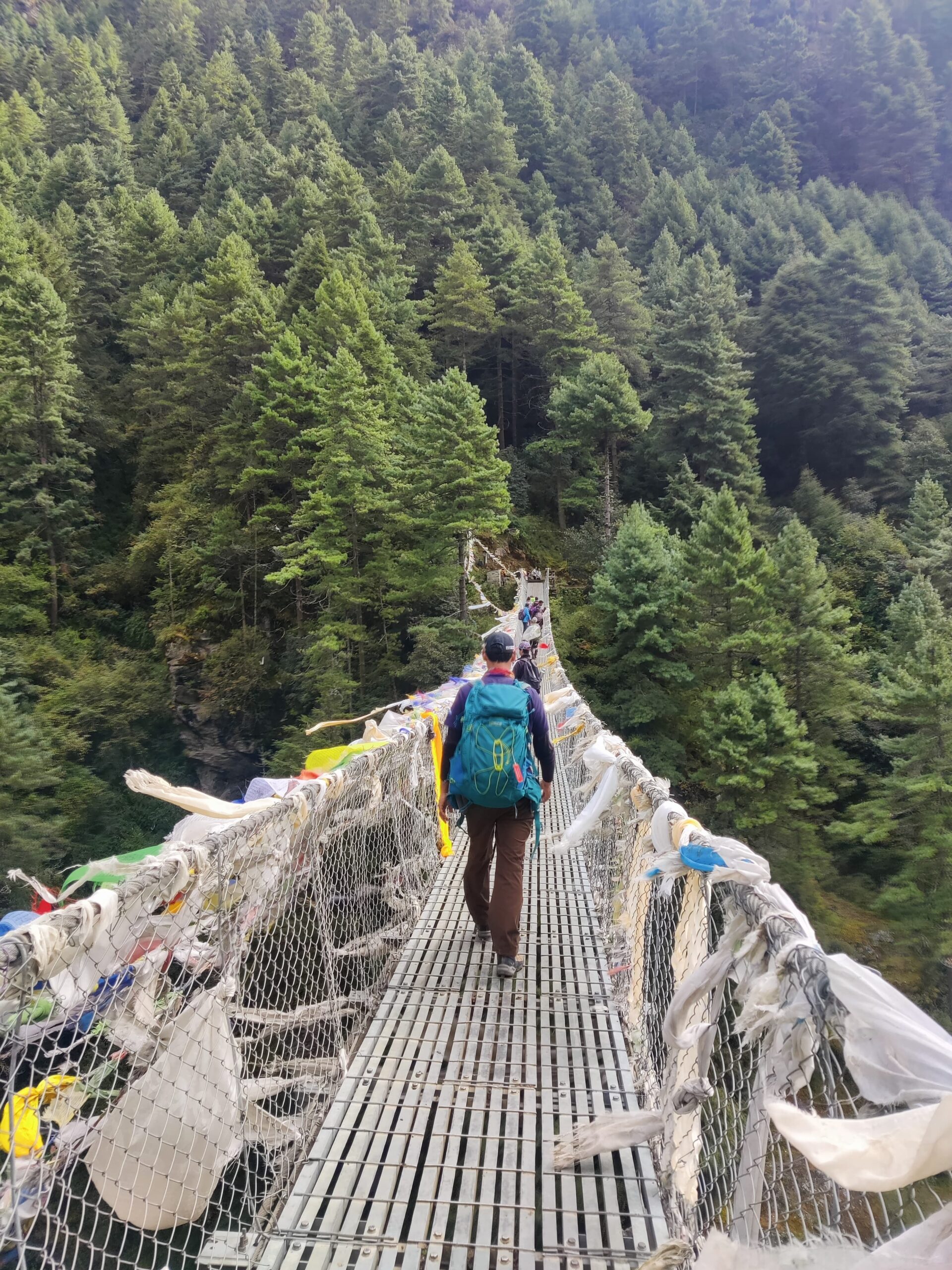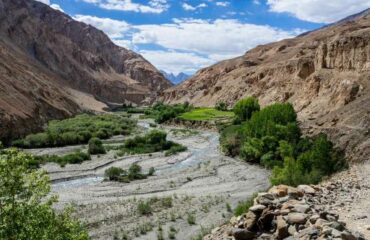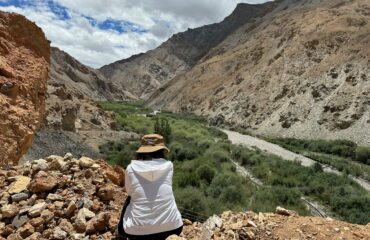
“Kang Yatse 1, Ladakh – A dream climb that will challenge your inner Adventurer!”
Introduction
Ladakh is a dream destination for trekkers and bikers alike. However, the region offers much more than that. In fact, many mountaineers have Ladakh on their bucket list for various climbing expeditions, such as Kang Yatse 1, Kang Yatse 2, Mount Dzo Zongo, Mentok Kangri, Stok Kangri, Go-leb Kangri, and more.
Ladakh is truly a melting pot for climbers from across the world, each seeking to conquer 6000+ meter peaks. Moreover, the region’s unique landscape and challenging terrain attract those eager to test their skills in high-altitude mountaineering.
Kang Yatse 1 – Overview
Kang Yatse in Ladakh is a prominent peak in the Markha region of Ladakh. It has two summits: Kang Yatse 1 and Kang Yatse 2. The first summit, Kang Yatse 1, stands at an impressive 6400 meters, while the second summit, Kang Yatse 2, also reaches 6250 meters above sea level.
While both summits are at the same altitude, Kang Yatse 1 is technically more challenging. This makes it a more difficult ascent for climbers for several reasons.
Kang Yatse 1, located in Ladakh, is a dream climb for many adventurers. It is especially appealing for those who have some experience of mountaineering and are looking forward to more. However, this climb demands excellent physical fitness, as only the fittest climbers can even attempt it.
In this blog, we will cover all the essential information you need to successfully climb Kang Yatse 1.
Accessibility of Kang Yatse 1
Kang Yatse 1 originates in the Markha region. Interestingly, the popular Markha Valley trek shares a similar route with the Kang Yatse climb. Often, trekkers and climbers will walk together until climbers diverge toward the base camp of the mountain.
The journey begins in Leh, where you arrive and rest on Day 1. As part of mandatory acclimatization, Day 2 is also spent in Leh for rest and exploration. This helps your body adjust to the high-altitude environment before the trek begins.
Over the next six days, you will embark on the journey to the Markha Valley, gradually making your way to the summit of Kang Yatse 1. Finally, after summiting, you will head toward Nimaling. The journey concludes with a trek to the village of Chokdo. From Chokdo, you’ll drive back to Leh and return to civilization.
Kang Yatse 1 – Itinerary Overview
- Day 01 – Arrival in Leh. (Overnight in Hotel)
- Day 02 – Rest and acclimatization. (Overnight in Hotel)
- Day 03 – Drive from Leh towards Markha, Trek for 3 hours and spend overnight in Markha.
- Day 04 – Trek from Markha to Thachungtse & Camp overnight.
- Day 05 – Thachungtse to Kang Yatse 1I Base Camp and stay overnight.
- Day 06 – Kang Yatse 1I to Kang Yatse 1 Base Camp.
- Day 07 – Base Camp Acclimatization and Training.
- Day 08 – Base Camp to Camp I (5440 M)
- Day 09 – Camp 1 to Camp 2 (5770 M)
- Day 10 – From camp 2 to Summit of Kang Yatse 1 & back to Camp 1/Base Camp
- Day 11 – Buffer day in case of bad weather..
- Day 12 – Trek down to Nimaling for an overnight stay.
- Day 13 – Trek from Nimaling to Chokdo & drive to Leh via Hemis Monastery.
- Day 14 – Fly out from Leh.
Season to Climb
The best months to climb Kang Yatse 1 coincide with the Markha Valley Trek and Kang Yatse 2. Specifically, July, August, and September are ideal months to attempt this climb. During these months, the temperature in Ladakh is much more pleasant, which helps trekkers and climbers better adapt to the environment.
On the other hand, winter in Ladakh can be extremely harsh. Therefore, attempting a climb during the winter is not only dangerous but also not recommended for the faint-hearted. Thus, from July to September, the trail from the Markha Valley all the way up to the Base Camp of Kang Yatse 1 provides the perfect timeframe to make your attempt.
Temperatures and Expected Weather
The temperatures from Day 1 in Leh to Day 5 at Thachungtse are generally pleasant. During the day, the temperature can range from 15 to 25 degrees Celsius when the sun is out. However, in case of bad weather or high winds, daytime temperatures may drop to 8–10 degrees Celsius, and these fluctuations can vary depending on the day.
Nighttime temperatures typically range from 5 to 8 degrees Celsius, though they may feel colder (2–4 degrees) during high winds or in case of rain or drizzle. As you ascend, expect temperature fluctuations of 2 to 3 degrees each day.
At Kang Yatse Base Camp, situated at 5100 meters, daytime temperatures can range from 0 to 8 degrees Celsius. However, nighttime temperatures can drop to -5 to -10 degrees Celsius.
At the summit of Kang Yatse 1, which is located at 6400 meters (approximately 20,997 feet), daytime temperatures range from 0 to -10 degrees Celsius. Nighttime temperatures can plummet to as low as -30 degrees Celsius.
The summit push typically begins at night from Camp 2, and by the time you reach the summit, it will be early morning. Although the morning temperatures on the summit are more bearable, the wind-chill factor can cause extreme cold, even during the day. Thus, it is crucial to be mentally and physically prepared for extreme temperatures during your journey.
Terrain
The terrain on the trekking section of the journey, from Markha to Thachungtse, is a combination of dry rocks, grass meadows, and sand dunes. You will also encounter river crossings on certain days, which will require you to cross to the other side of the valley.
As you approach the Base Camp, the terrain becomes more arid and is covered with loose rocks. Beyond Camp 1 and Camp 2, you will primarily encounter ice, snow, and crevasses. On the summit trail, there are snow-covered crevasses, making it necessary to rope yourself for safety. The summit itself is surrounded by moraine and loose rocks.

Communication Channels on the Climb
Only postpaid networks work in Ladakh. BSNL and Airtel sim cards offer the best coverage in the valley, at the Base Camp, and at the endpoint of the trek. However, while trekking, you will likely be disconnected from communication with family and friends. Therefore, it is advisable to inform them beforehand.
Please note, due to the regulations set by the Indian Army, the use of satellite phones, pagers, walkie-talkies, drones, etc., is strictly prohibited in the valley.
Can a First-Timer Attempt Kang Yatse 1?
It is not recommended for novice climbers to attempt Kang Yatse 1. This expedition requires climbers to have a solid understanding of climbing equipment and techniques. Moreover, the steep ascent and descent require sufficient experience in navigating challenging terrains.
Given the altitude exceeds 6000 meters and the extreme temperatures, beginners should reconsider attempting this climb. To build the necessary experience and physical fitness, we recommend climbing other peaks like Kang Yatse 2, Island Peak, or Lobuche Peak. These climbs will help prepare you both physically and mentally for Kang Yatse 1.

Challenges on Kang Yatse 1
The climb to the summit of Kang Yatse 1 is a challenging feat, requiring both physical strength and mental determination. Several challenges may arise during the climb, and climbers must be prepared for them.
- Weather Window: It is crucial to have a clear weather window on your summit day. The high winds on Kang Yatse 1 can make or break your attempt. Climbing in high winds is not only dangerous but can also be fatal, so it’s best to avoid it.
- Acclimatization: Ladakh’s dry and arid terrain presents challenges for acclimatization. Since Kang Yatse 1 stands at an altitude of over 20,997 feet, climbers are at risk of AMS (Acute Mountain Sickness) if proper acclimatization is not done. Inadequate acclimatization can lead to life-threatening conditions like pulmonary and cerebral edema.
- Technical Challenges: Although Kang Yatse 1 requires some technical climbing skills, certain equipment—such as micro spikes, gaiters, ropes, carabiners, climbing helmets, and snow glasses—is necessary. Some sections of the climb are steep and can lead to slips, making the use of these tools essential.
- First-Timers: Although we do not recommend first-timers attempt Kang Yatse 1, if you decide to proceed, be mentally prepared. The transition from being a trekker to a climber is not easy. First-time climbers may feel overwhelmed by the high altitude, technical equipment, fatigue, and the rough terrain. These factors may discourage them from continuing the climb.
Technicalities Involved
Kang Yatse 1 is a technical climb that involves trekking from Markha to Thachungtse. Once you reach Thachungtse, you will proceed toward the Base Camp, situated at 5100 meters. The summit lies at 6400 meters, which is a considerable altitude gain.
The climb involves steep ascents and snow-covered crevasses. Climbers need to rope up while crossing crevasses. The ascent may also require using crampons and ice axes. The steep terrain requires additional support, especially when descending, as the use of ropes and ice axes is critical to safely navigate the descent.
What Kind of Equipment is Needed?
Along with your standard high-altitude trekking apparel, additional climbing equipment is necessary for Kang Yatse 1. This includes gaiters, crampons, micro spikes, climbing helmets, ice axes, and more. For a complete list of required equipment, please refer to our website.
What Level of Physical and Mental Fitness is Needed?
Climbing Kang Yatse 1 is challenging and not for the faint-hearted. This expedition demands excellent physical and mental fitness. Climbers need strong endurance and stamina to summit the peak. Good cardiovascular fitness and muscular strength are particularly helpful during the summit push, which can last 12 to 15 hours, depending on the weather and group pace.
Even experienced climbers can feel mentally unprepared due to the high altitude, the technical gear required, the exhaustion, and the challenging terrain. These factors can overwhelm anyone, making it crucial to stay focused and mentally prepared.
Prepping for Summit
Throughout the Kang Yatse 1 expedition, you will camp at different altitudes. Starting from the Base Camp at 5100 meters, you will spend one night at Camp 1 (5440 meters) and the next night at Camp 2 (5770 meters). Camp 2 is the last place you’ll set up camp before the summit push.
At the Base Camp, an additional acclimatization day is spent practicing with climbing equipment. Climbers familiarize themselves with tools like harnesses, crampons, carabiners, ropes, and more. This practice ensures that everyone understands how to use their gear, stay in sync with the group, and address any questions before the summit attempt. Both Camps 1 and 2 are crucial for acclimatization to the high altitude and extreme temperatures, which prepare your body for the final ascent.

Chances of Fatality
Although the chances of fatality on Kang Yatse 1 are low, they can increase depending on the safety measures in place. Weather can be unpredictable, and high winds can pose a significant threat. With proper preparation, adequate equipment, and experienced guides, Kang Yatse 1 is a safe climb and a great option for first-timers.
Adventure Pulse Campsites
Upon arrival in Leh, you will spend your first night in a hotel. Day 2 will also be spent in Leh for mandatory acclimatization. On Day 3, the team will drive to Markha, the starting point of the climbing expedition.
Adventure Pulse campsites include:
- Sleeping Area: Comfortable sleeping tents.
- Dining Area: A dining tent with stools and tables for meals, lit by solar lights at night.
- Kitchen Area: Our cook and helpers prepare hot meals daily.
- Toilet Facilities: Set up at a distance from dining and sleeping areas for convenience.
How Will I Sleep During the Expedition?
During the trek, you will stay in alpine dome-shaped tents. Adventure Pulse provides a 3-man tent for two people, but single tents can be arranged for an extra cost. Each tent is lined with foam insulation, topped with a sleeping mat and a thick sleeping bag to ensure warmth, even in temperatures as low as -15 to -20 degrees Celsius.
What About the Toilets?
Toilet tents are set up at each campsite, with sanitizing sprays, toilet paper, and waste packets provided. Toilets will be set up away from running water to ensure sanitation.
What Will I Be Carrying During the Expedition?
For a checklist of items to carry, refer to our website. However, we strongly recommend traveling light and carrying only essential items. Additionally, a porter will carry a 12–15 kg load.
Meals Served
Throughout the expedition, we provide nutritious and delicious meals to ensure you stay energized and hydrated. At each campsite, our experienced cook will prepare a variety of wholesome dishes, including a mix of Indian, Tibetan, and Western cuisines. The food is specifically designed to help maintain stamina and energy at high altitudes, with a focus on high-protein and carbohydrate-rich options.
For breakfast, expect warm options like porridge, eggs, toast, and tea or coffee. During lunch, a mix of hot and cold dishes will be served, such as vegetable rice, chapatis, sandwiches, or soup. Dinner typically includes hearty dishes like pasta, dal, rice, and a variety of vegetables. Snacks, including fruit, energy bars, and dry fruits, will be available to keep you fueled throughout the day.
At higher altitudes, we understand the importance of maintaining caloric intake, so extra provisions like instant noodles, energy drinks, and high-calorie snacks will be provided. The menu is flexible and can accommodate various dietary preferences or restrictions, but please inform us of any special dietary requirements in advance.
Climbing with Adventure Pulse
Climbing with Adventure Pulse means you’re experiencing a well-organized and safe journey. Our team of experienced and certified guides and porters will be with you every step of the way. We prioritize your safety, comfort, and overall experience, ensuring that you have all the necessary support and guidance throughout your climb.
Adventure Pulse specializes in providing the top-notch climbing equipment, and expert guidance, ensuring you have the right tools and knowledge to face the challenges of Kang Yatse 1. Our guides are not only skilled climbers but are also well-versed in high-altitude conditions, helping you understand the technical aspects of climbing, acclimatization processes, and proper use of gear like crampons, ice axes, and ropes.


